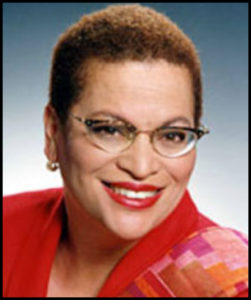
What about the children?
 Julianne Malveaux
Julianne Malveaux
Do you see the light at the end of the coronavirus tunnel?
With all 50 states and the District of Columbia) either lifting “shelter in place” orders or relaxing them, with restaurants opening, albeit at half capacity, things seem to be slowly returning to “normal” whatever that is. Many of us are still “social distancing,” as defined by the Centers for Disease Control as staying six feet away from each other and covering our noses and mouths.
We are in a recession. It won’t get better until we have a corona vaccine, and until we provide more support for workers. Entire industries are on the verge of collapse, forcing people to go through a huge transition. Smart entrepreneurs have started investing in online-based recession-proof businesses, but it’s going to be a while before they’re fully up and running. Even then, there’s no real guarantee that it will fix the problem.
The recession will only abate when people get back to work, and when people start spending money. But most parents can’t confidently return to work without safe, reliable child care. And it isn’t clear how small children can observe social distancing guidelines, standing six feet away from other children. Will child care centers have to accept fewer children so that they can keep children apart? How will it affect their bottom line? Many daycare providers won’t survive the coronavirus, reducing the already scarce supply of child care.
Summer plans have gone kaput. Air travel is down 90 percent, as people still aren’t ready to get on a plane. What does that do to family vacations or plans for summer camp? Many parents look forward to a kid-free week or so, and many children enjoy the educational enrichment that comes with summer camp. Now, many parents will patch together plans. Something is likely to fall between the cracks.
In some jurisdictions, the delivery of education will look very different than in the past. Some districts are considering having young people at school one or two days a week, or a week or so a month. How will working families manage child care when young people are not at school?
If getting people back to work is essential to economic recovery, then we had better start thinking of the children. Why is there such a shortage of affordable child care? Why don’t we have a families policy that supports families with food, child care, and other necessities? If we want parents to work, then we have to be prepared to support them.
Many people see the child care issue as a women’s issue because most people assume that women should be in-charge of their children. But in nearly half (46 percent) of all households, both parents work. Child care should not be solely a woman’s job. If we are to meet our labor market needs, then the child care issue is not a women’s issue, but a societal issue.
Part of the issue is ensuring that child care workers and other domestic workers are paid fairly. The average child care worker earns $11.17 an hour, or about $23,000 a year. If a single mom with two children nakes that much, she is below the poverty line. How can she focus on caring for your children when she always worried about making ends meet?
In July 2019, Senator Kamala Harris (D-CA) and Congresswoman Premila Jayapal (D-WA) introduced the Domestic Workers Bill of Rights to protect the 2 million domestic workers who provide care for seniors, children, and others. The legislation has not passed the Republican-led Senate, but its introduction is significant. Several states, including New York, Washington, and Hawaii, have passed similar legislation.
Perhaps the indifference to legislation like this is reflective of the fact that the majority of domestic workers are women of color and immigrant women. These women are relatively powerless unless they are organized, and join with Ai-jen Poo, who leads the National Domestic Workers Alliance committed to organizing domestic workers.
When we ask about the children, we must ask about their children first since they are among the most vulnerable.
The children of people who are economically secure will enjoy good care. They’ll have tutors, computers, broadband, vacations and more. They won’t get the opportunity to play, but their parents have the means to get them everything else they need. But the children in low-income families won’t have everything they need. They will fall behind in school with the patchwork arrangements that are available to them. Some will go hungry because some food programs have run out of food.
People can’t go back to work unless they have a safe place to keep their children. Our recession reminds us of the need for universal child care and fair treatment for domestic workers. People love to say they believe that children are the future, but even as they move their lips, no sound is coming out, there is no action.
Dr. Julianne Malveaux is an economist. She can be reached at www.juliannemalveaux.com







